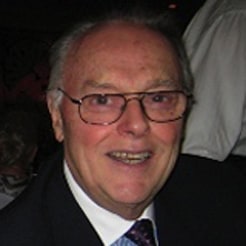
Seeking a Future-Friendly Company
Maybe it’s time to move toward a friendlier future. We live in a world exploding with technological innovation. And this rapid pace of change is only accelerating. We are at the forefront of a new revolution for which most of us are unprepared. Before we can take advantage of all the exciting possibilities technology has to offer, we must first change the way we think and work together.
To become a more future-friendly organization, companies must acknowledge and embrace unpredictability, think and behave in a future-friendly way, and help others to do the same.
People’s capability for managing false truths is rapidly diminishing. As technology becomes more ubiquitous, people are getting used to the idea of interacting solely with things whenever it is convenient for them.
For organizations or individuals who have long enjoyed force-feeding their own flavor of false truths to the masses, this is a frightening thing. However, this doesn’t need to be the case. The opportunity does exist for future-friendly leaders of today’s companies to reach their people. However, it cannot be in the insincere methods of the past. Instead, we must deliver real worth and truth through openness.
To provide real worth, future-friendly leaders must deliver strong, purposeful content to people wherever they may be. Currently, this includes a plethora of mobile devices, tablets, e-readers, and more. But this is just the beginning. Instead of chasing down the latest and greatest gadget, we must focus our efforts on creating worthwhile content, which is properly structured to go anywhere. That’s because it will be going everywhere.
In Lead from the Future: How to Turn Visionary Thinking Into Breakthrough Growth (2020), Mark Johnson and Josh Suskewicz summarize the evolution of visionary future-friendly leadership:
“In history, Winston Churchill inspired the British people in their darkest hour, and Nelson Mandela led the resistance to apartheid from his prison cell on Robben Island. Visionaries like Bill Gates, Steven Jobs, Jeff Bezos, and Elon Musk recognized the transformative power of new technologies and leveraged them to build vast enterprises, which changed whole economies and ways of life. Each of these leaders looked past the conventional wisdom of the day and foresaw a more optimal and friendly world.”
Every one of us has the potential to see farther and clearer than we think we can provided that we are willing to learn new things and unlearn old ones. Author Carol Dweck identified two kinds of learners: “know-it-alls” and “learn-it-alls.” According to Dweck, know-it-all leaders are smart but reluctant to stretch or challenge themselves less they lose face with their colleagues, or worse still, find out that they are not as smart as they thought they were. Learn-it-all leaders, in contrast, accept that they do not know all that there is to know. While know-it-all leaders compete with and undercut their peers, learn-it-all leaders collaborate with them. Above all, they are flexible and adaptable and willing to continually adjust and reshape their visions in light of what they learn as they work with their teams to translate them into reality.
The late U.S. President John F. Kennedy was quoted as having said that “the optimal time to fix the roof is when the sun is shining.” Creating a vision, translating it into a future-friendly strategy, and then programming and implementing the vision is not a discrete event within a company’s life. In a way, it is its life. The work is never done. There is always more future ahead of us, so newer ventures must be constantly begun. And this will be accomplished only when the future is created as friendly to its leaders and coworkers.
- About the Author
- Latest Posts
Vice President Emeritus for Learning Technologies Donald Smith, Ed.D, CPT, headed ME&A programs in learning, leadership, and performance enhancement. He stayed with the firm in his retirement, bringing more than 65 years of experience as a coach, designer, facilitator, evaluator, manager, educator, and organizational change architect in more than 40 countries. He is affectionately known as ME&A’s MENCH.



